 By Christine Darg
By Christine Darg
Jerusalem Channel
Alarming headlines concern the comeback of antisemtisim—something we never dreamed possible after the repulsive and unspeakable horrors of the Holocaust. History is tragically repeating itself but not without a lot of resistance this time in evangelical Christian communities.
It’s often stated that a Declaration of the Second Vatican Council started the process of reconciliation between Jews and Christians. In 1965, the Second Vatican Council took a new, less adversarial approach to the relationship between the Church and rabbinic Judaism. Now in our times a half century later, many cutting edge Orthodox rabbis have dared to respond with an amazing re-evaluation and positive view of Christianity. Their statement “To Do the Will of Our Father in Heaven” is very encouraging.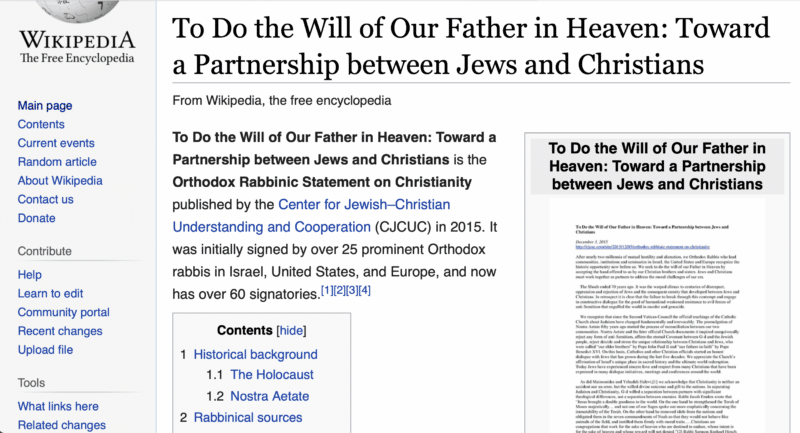
The amazing 2015 sculpture at Saint Joseph’s University in Philadelphia is called Ecclesia et Synagoga, meaning “Church and Synagogue;” it’s a pair of bronze figures personifying the Christian Church and the Jewish Synagogue in dialogue and harmony, side-by-side rather than adversaries . . .The sculpture commemorates the Second Vatican Council’s revolutionary positive stance on Judaism. The sculpture was dedicated on the 50th anniversary of the Vatican’s Declaration called Nostra aetate, Latin for “In our times.”
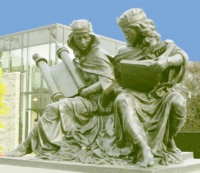 In the sculpture at right, both personifications of synagogue and church wear crowns and hold their respective Scriptures, suggesting that we learn from one another. Indeed, Christians are enjoined in the New Testament to hold the Jewish people in special regard as our elders in the faith because their covenant with God has never been revoked. The apostle Paul, himself a rabbi, wrote in Romans Chapter 11 that his Jewish brethren are greatly beloved for the sake of the Fathers and the promises made to them, and “the gifts and the call of God are irrevocable.” (Romans 11: 29)
In the sculpture at right, both personifications of synagogue and church wear crowns and hold their respective Scriptures, suggesting that we learn from one another. Indeed, Christians are enjoined in the New Testament to hold the Jewish people in special regard as our elders in the faith because their covenant with God has never been revoked. The apostle Paul, himself a rabbi, wrote in Romans Chapter 11 that his Jewish brethren are greatly beloved for the sake of the Fathers and the promises made to them, and “the gifts and the call of God are irrevocable.” (Romans 11: 29)
The amicable sculpture showing real camaraderie is quite a departure from depictions on cathedrals and churches throughout history. In the past, two female figures representing church and synagogue often appeared as large figures on either side of a church portal, as in the most famous example, these opposing statues from Strasbourg Cathedral in France emphasizing defeat of the Synagogue. In many medieval edifices Ecclesia was generally adorned with a crown, a communion chalice and cross-topped staff, looking confidently forward. In contrast, 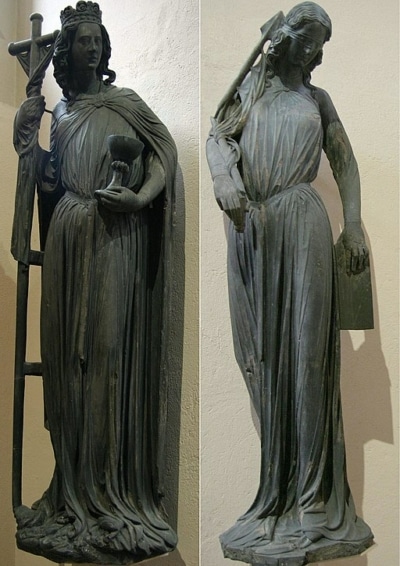 Synagoga was uncrowned blindfolded and drooping, carrying a broken lance (an allusion to the spear used by the Romans to pierce the side of the dead Messiah hanging on the cross). And slipping from her hand were the Tablets of the Law. The medieval figures reflect the erroneous belief of Replacement Theology, sometimes called Supersessionism, that Judaism had been surpassed and was thus irrelevant. Nothing could be more short-sighted because the Scriptures foretold that the nation of Israel would be regathered in the last days prior to the Second Coming of King Messiah, Jesus (Yeshua is his Hebrew name). The sculpted portal figures were generally found on the cathedrals of larger cities in northern Europe that had significant Jewish communities, especially in Germany, and were intended to project the idea of Jewish submission and humiliation. In England there are remains of pairs of these personifications of synagogue and church, after damage or destruction in the Reformation, from the cathedrals of Rochester, Lincoln, Salisbury and Winchester.
Synagoga was uncrowned blindfolded and drooping, carrying a broken lance (an allusion to the spear used by the Romans to pierce the side of the dead Messiah hanging on the cross). And slipping from her hand were the Tablets of the Law. The medieval figures reflect the erroneous belief of Replacement Theology, sometimes called Supersessionism, that Judaism had been surpassed and was thus irrelevant. Nothing could be more short-sighted because the Scriptures foretold that the nation of Israel would be regathered in the last days prior to the Second Coming of King Messiah, Jesus (Yeshua is his Hebrew name). The sculpted portal figures were generally found on the cathedrals of larger cities in northern Europe that had significant Jewish communities, especially in Germany, and were intended to project the idea of Jewish submission and humiliation. In England there are remains of pairs of these personifications of synagogue and church, after damage or destruction in the Reformation, from the cathedrals of Rochester, Lincoln, Salisbury and Winchester.
Despite the bitter past, despite the long history of enmity between Christians and Jews, in 2015 much to my amazement and rejoicing, the Center for Jewish–Christian Understanding and Cooperation in Israel published a statement “Toward a Partnership between Jews and Christians” with the significant title: To Do the Will of Our Father in Heaven. This Orthodox Rabbinic Statement on Christianity was initially signed by over 25 prominent Orthodox rabbis in Israel, United States and Europe, and now has well over 100 signatories. Many of these Orthodox leaders are considered pariahs for having signed, yet they believe they are doing the will of the Father in heaven by engaging in constructive dialogue for the good of humankind.
The rabbinic statement references the teachings of Moses Maimonides, the Sephardic Jewish philosopher who became one of the most prolific and influential Torah scholars of the Middle Ages, and also Yehuda Halevi, one of the greatest Hebrew poets. It acknowledges Christianity as an emergence of divine will in human history and a “gift to the nations.”
The 2015 rabbinic document also cites an 18th century Rabbi, Jacob Emden, in regards to the “double goodness” that Jesus brought to the world. I researched this rabbi, and indeed I learned that he believed through Christianity the knowledge of God will one day spread throughout the earth. Emden praised the ethical teachings of Christianity, considering them beneficial in removing the prevalence of idolatry and bestowing gentiles with a “moral doctrine.”
According to Rabbi Shlomo Riskin, the founding chief rabbi of the town of Efrat and the founder of the Center for Jewish–Christian Understanding and Cooperation, the real importance of this Orthodox statement is that it calls for fraternal partnership between Jewish and Christian religious leaders, while also acknowledging the positive theological status of the Christian faith. Jews and Christians must be in the forefront of teaching basic moral values to the world.
Others in the Jewish world criticized the statement as a breach of their world view and traditions of Judaism.
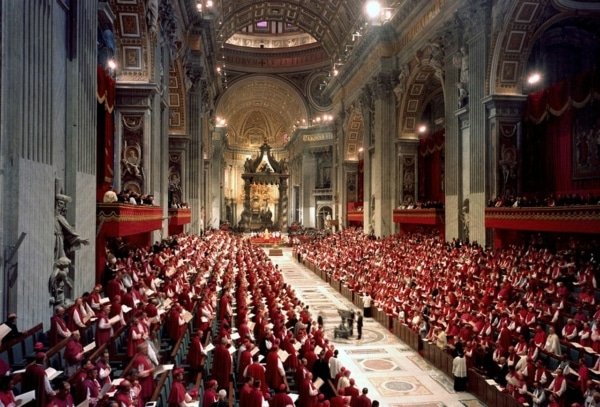 Nostra aetate was passed by a vote of 2,221 to 88 of assembled bishops in 1965. How did it come about? A sympathetic Pope John XXIII endorsed the creation of a document which would address a new, less adversarial, approach to the relationship between the Catholic Church and Rabbinic Judaism. The Pope followed an approach by a highly respected Jewish historian in France who was associated with the International Council of Christians and Jews–Jules Isaac– who claimed that Christian antisemitism had prepared the way for the Holocaust. Conservative cardinals were suspicious and Middle Eastern Catholics who were unsympathetic to the new state of Israel strongly opposed the creation of such a document. There were several leaks during its development due to the involvement of the intelligence agencies of several nations and the governments of Arab nations. In fact, the Voice of the Arabs, based in Cairo, predictably ascribed this move to a Zionist plot.
Nostra aetate was passed by a vote of 2,221 to 88 of assembled bishops in 1965. How did it come about? A sympathetic Pope John XXIII endorsed the creation of a document which would address a new, less adversarial, approach to the relationship between the Catholic Church and Rabbinic Judaism. The Pope followed an approach by a highly respected Jewish historian in France who was associated with the International Council of Christians and Jews–Jules Isaac– who claimed that Christian antisemitism had prepared the way for the Holocaust. Conservative cardinals were suspicious and Middle Eastern Catholics who were unsympathetic to the new state of Israel strongly opposed the creation of such a document. There were several leaks during its development due to the involvement of the intelligence agencies of several nations and the governments of Arab nations. In fact, the Voice of the Arabs, based in Cairo, predictably ascribed this move to a Zionist plot.
Originally, Nostra aetate was only supposed to focus on the relationship between the Church and Judaism. But after numerous drafts, compromises were made and a statement was added on Islam to mollify security concerns of Arab Christians as well as statements on other religions to facilitate dialogue.
The specific origins of Nostra aetate can be traced directly to a meeting between Pope John XXIII and Jules Isaac in 1960. In light of the Holocaust, Isaac wanted a document at the Second Vatican Council, distancing the Church from preaching the concept of Jewish deicide resulting in what Isaac called Christian antisemitism. Isaac’s first book based on his research regarding the Christian roots of antisemitism was his book Jésus et Israël (published in 1948, and translated into English in 1971). In the book Isaac created the phrase “the teaching of contempt.”
In his preface, Isaac wrote that the book “was born of persecution. . . . It is the cry of an outraged conscience, of a lacerated heart. It is addressed to men’s consciences and hearts. I sorrow over those who will refuse to hear it.” The book’s dedication is a short poem in memory of his wife and daughter who were martyred by Hitler’s Nazis simply because their surname was Isaac.
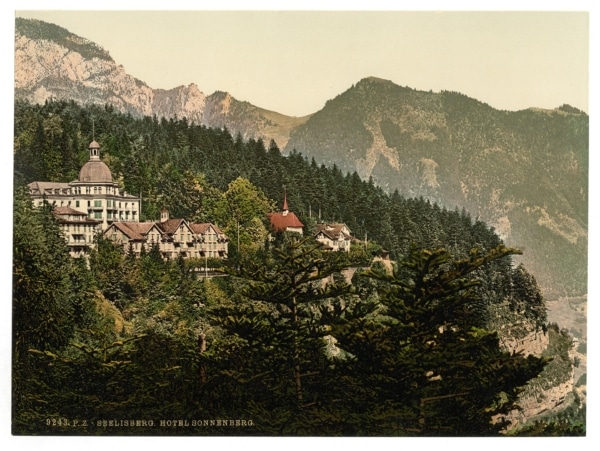 Jésus et Israël made Isaac a significant player at the pivotal 1947 Seelisberg, Switzerland Conference which was officially called the International Emergency Conference on Anti-Semitism. Its purpose was to find reasons for the antisemitism which existed even after World War II and to develop measures to combat it. The Ten Points of Seelisberg were greatly influenced by Isaac’s manuscript.
Jésus et Israël made Isaac a significant player at the pivotal 1947 Seelisberg, Switzerland Conference which was officially called the International Emergency Conference on Anti-Semitism. Its purpose was to find reasons for the antisemitism which existed even after World War II and to develop measures to combat it. The Ten Points of Seelisberg were greatly influenced by Isaac’s manuscript.
1. Remember that One God speaks to us all through both Testaments of the Bible.
2. Remember that Jesus was born of a Jewish mother of the seed of David and the people of Israel, and that His everlasting love and forgiveness embraces His own people and the whole world.
3. Remember that the first disciples, the apostles and the first martyrs were Jews.
4. Remember that the fundamental commandment of Christianity, to love God and one’s neighbour, proclaimed already in the Hebrew Bible and confirmed by Jesus, is binding upon both Christians and Jews in all human relationships, without any exception.
5. Avoid distorting or misrepresenting biblical or post-biblical Judaism with the object of extolling Christianity.
6. Avoid using the word Jews in the exclusive sense of the enemies of Jesus, and the words “the enemies of Jesus” to designate the whole Jewish people.
7. Avoid presenting the Passion in such a way as to bring the odium of the killing of Jesus upon all Jews or upon Jews alone. It was only a section of the Jews in Jerusalem who demanded the death of Jesus, and the Christian message has always been that it was the sins of mankind which were exemplified by those Jews and the sins in which all men share that brought Christ to the Cross.
8. Avoid referring to the scriptural curses, or the cry of a raging mob: “His blood be upon us and our children,” without remembering that this cry should not count against the infinitely more weighty words of our Lord: “Father forgive them for they know not what they do.”
9. Avoid promoting the superstitious notion that the Jewish people are reprobate, accursed, reserved for a destiny of suffering.
10. Avoid speaking of the Jews as if the first members of the Church had not been Jews.
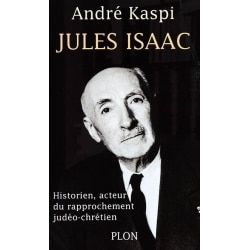 The prophetic movement of Jews and Christians becoming modern-day allies owes an incalculable debt to the sufferings of Jules Isaac, to his writings and to his God-given ability to reach out to Christians in what my friend Josh Reinstein, director of the Israel Allies Foundation, has dubbed “faith based diplomacy”. Isaac’s central thesis was that the most dangerous form of antisemitism is Christian anti-semitism, and his solution was that Christianity must adopt a new relationship with Jews. Thankfully in the providence of God, his friend Pope John XXIII was favourably disposed to Isaac’s suggestion for a document amicable toward the Jewish people. Previously as the Archbishop Apostolic Delegate to Turkey, the Pope had enjoyed a long relationship with Jewish communities and after being raised to the Papacy in 1958, he removed from the Good Friday prayer for the Jews the term “perfidious” (meaning faithless and treacherous, as in a perfidious lover).
The prophetic movement of Jews and Christians becoming modern-day allies owes an incalculable debt to the sufferings of Jules Isaac, to his writings and to his God-given ability to reach out to Christians in what my friend Josh Reinstein, director of the Israel Allies Foundation, has dubbed “faith based diplomacy”. Isaac’s central thesis was that the most dangerous form of antisemitism is Christian anti-semitism, and his solution was that Christianity must adopt a new relationship with Jews. Thankfully in the providence of God, his friend Pope John XXIII was favourably disposed to Isaac’s suggestion for a document amicable toward the Jewish people. Previously as the Archbishop Apostolic Delegate to Turkey, the Pope had enjoyed a long relationship with Jewish communities and after being raised to the Papacy in 1958, he removed from the Good Friday prayer for the Jews the term “perfidious” (meaning faithless and treacherous, as in a perfidious lover).
The spiritual warfare surrounding Vatican Council II was huge. A document was circulated called “The Plot Against the Church” under a pseudonym allegedly funded by Egypt and elements in northern Italy. It was an 800-page polemic claiming libels that since the times of Jesus, for 1900 years Judaism had worked to overthrow Christianity and the Catholic Church.
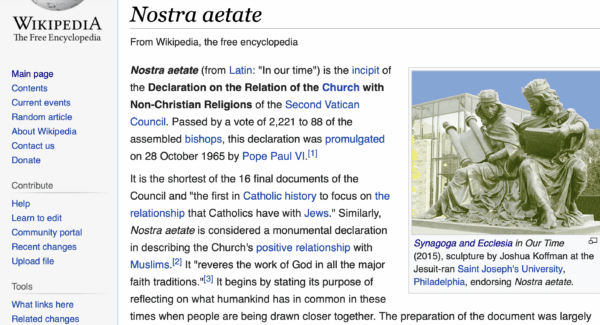 Part four of Nostra aetate refers specifically to Jews. Repeated in the text is the traditional teaching that the Catholic Church sees the beginnings of its faith in the Patriarchs and Prophets of ancient Israel. It also notes that the Apostles and many of the early Disciples of Jesus Christ had their roots in the Jews of that time, despite the fact that “Jerusalem did not recognize the time of her visitation, nor did the Jews in large number, accept the Gospel.” The most significant departure in the document from previous approaches was that “this sacred synod wants to foster and recommend that mutual understanding and respect which is the fruit, above all, of biblical and theological studies as well as of fraternal dialogues.” This paved the way for dialogue in the decades following in a manner which was not previously commonplace.
Part four of Nostra aetate refers specifically to Jews. Repeated in the text is the traditional teaching that the Catholic Church sees the beginnings of its faith in the Patriarchs and Prophets of ancient Israel. It also notes that the Apostles and many of the early Disciples of Jesus Christ had their roots in the Jews of that time, despite the fact that “Jerusalem did not recognize the time of her visitation, nor did the Jews in large number, accept the Gospel.” The most significant departure in the document from previous approaches was that “this sacred synod wants to foster and recommend that mutual understanding and respect which is the fruit, above all, of biblical and theological studies as well as of fraternal dialogues.” This paved the way for dialogue in the decades following in a manner which was not previously commonplace.
Many documents of the Second Vatican Council contain texual ambiguities, due to compromises between liberal and conservative factions. The final text of Nostra aetate in regards to the question of deicide did not mention the word “deicide” specifically, as it had in some previously proposed versions. The document states “what happened in His [Jesus’s] passion cannot be charged against all the Jews, without distinction, then alive, nor against the Jews of today.” The exclusion of the specific term “deicide” and the textual ambiguity resulting from the fierce debates at the council is such that the text has been interpreted in different ways. The phrase “cannot be charged against all the Jews, without distinction” allows conservatives to present that the Jews who had become Christians, then and since, were not culpable, while others interpret it as exonerating the Jews of deicide as a whole.
On the question of antisemitism, the document says that the Church “decries hatred, persecutions, displays of anti-Semitism, directed against Jews at any time and by anyone.” Earlier versions of the text said that it “condemns” it, but this was removed from the final version.
The document also states that all men are created in God’s image, and that the “Church reproves, as foreign to the mind of Christ, any discrimination against men or harassment of them because of their race, color, condition of life, or religion.”
To mark the 50th anniversary of the ground-breaking declaration of Nostra aetate and the Church’s new theological framework, the Vatican’s Commission for Religious Relations with Jews released a new document exploring the unresolved theological questions at the heart of Christian–Jewish dialogue. The new declaration was suitably entitled “The Gifts and Calling of God are Irrevocable” and stated that the fundamental esteem for Judaism expressed in Nostra aetate has enabled communities that once faced one another with scepticism to become – step by step over the years – reliable partners and even good friends, capable of weathering crises together and negotiating conflicts positively. Therefore, the fourth article of Nostra aetate is recognised as the solid foundation for improving the relationship between Catholics and Jews.
I found it interesting that the Vatican’s Commission for Religious Relations with Jews has stated that the permanence of Israel is to be perceived as an “historic fact and a sign to be interpreted within God’s design.” 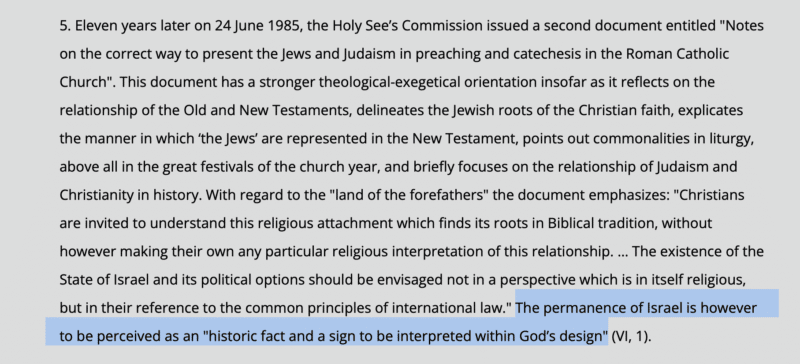
A third document of the Commission for Religious Relations with the Jews was presented to the public in 1998. It deals with the Shoah (Holocaust) under the title “We remember. A reflection on the Shoah.” This text delivers the harsh but accurate judgement that the balance of the 2000–year relationship between Jews and Christians is regrettably negative.
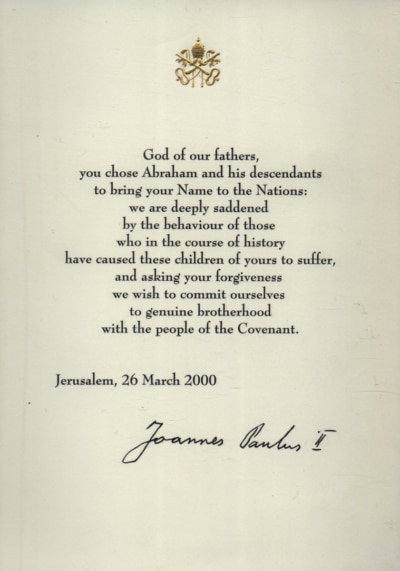 Former Pope John Paul II succeeded in fostering and deepening dialogue through compelling gestures. He was the first pope to visit the former concentration camp of Auschwitz-Birkenau to pray for the victims of the Shoah, and he visited the Roman Synagogue to express his solidarity with the Jewish community. In an historical pilgrimage to the Holy Land in the year 2000, John Paul was also a guest of the state of Israel where he paid a visit to both Chief Rabbis and he was the first pope to pray at the Western Wall where he left a prayer that is now in the archives of Jerusalem’s Holocaust Museum stating:
Former Pope John Paul II succeeded in fostering and deepening dialogue through compelling gestures. He was the first pope to visit the former concentration camp of Auschwitz-Birkenau to pray for the victims of the Shoah, and he visited the Roman Synagogue to express his solidarity with the Jewish community. In an historical pilgrimage to the Holy Land in the year 2000, John Paul was also a guest of the state of Israel where he paid a visit to both Chief Rabbis and he was the first pope to pray at the Western Wall where he left a prayer that is now in the archives of Jerusalem’s Holocaust Museum stating:
“God of our fathers, you chose Abraham and his descendants to bring your Name to the nations: we are deeply saddened by the behaviour of those who in the course of history have caused these children of ours to suffer and asking you forgiveness we wish to commit ourselves to genuine brotherhood with the people of the Covenant.”
As one brought up in the Protestant church, I have nevertheless found it important in this article to emphasize the remedial actions of the Catholic Church, because prior to Nostra aetate, up to that time, without a lot of interaction, in the minds of the Jewish people we Christians were all considered to be Catholics. In the meantime, Evangelicals have greatly benefited and taken Jewish-Christian dialogue to new levels in my opinion, but this would not have been possible without the groundwork laid by a conciliatory Catholic Church, despite all of its many unscriptural teachings.
Having engaged with the Jewish people now for many decades, I can truly say that bonds of genuine friendship have been forged and have proven to be stable, so that it’s now possible to discuss together sensitive and controversial subjects without tension or suspicion.
Recently I participated in a fascinating Zoom sponsored by the Center for Jewish–Christian Understanding and Cooperation. The title of the Zoom was, “The current state of the Jewish-Christian relationship,” and the agenda highlighted the ongoing and increasing signatories to the rabbinical statement of 2015 that essentially commended Christianity and Jesus.
Fascinating to me was that an Israeli clinical psychologist was one of the participants along with Rabbi Dr. Josh Ahrens and other rabbis. The clinical psychologist commended the 2015 rabbinic declaration as “brave” and a “cause of rejoicing” and also as a “crisis in Jewish identity,” which he said is a “good thing,” explaining that “we need crises. Abraham had his—breaking with idols and so on.” The psychologist noted that “we are still only at the beginning of our relationship with Christians.” But, he said, if Jews are truly to be allies of the Christians, it means “we have to reconsider fundamental aspects of our Jewish identity.” For example, to what extent is kosher dietary laws only about holiness? If Christians are allies, he asked, “should we reconsider some aspects of kashrut–those specifically set to put us apart from others?” He said, “I’m grateful for the step and the crisis that this declaration is causing us; it means it will take us forward, God willing. This [movement] has to become mainstream. Jews are resistant to this relationship—it’s very personal because our identity with history is our strength, but it’s also a ball and chain. It will happen gradually but we have to put our minds to furthering this cause.”
Although participants on the Zoom were not Messianic Christians– they were Orthodox Jews– nevertheless the level of discussion reminded me of the Jerusalem Council controversies that were hashed out in Acts Chapter 15 concerning issues such as dietary laws. It was a blessing to be a part of the discussion and to renew some acquaintances.
For example, I was impressed by the remarks of Rabbi Pesach Wolicki, who has spoken previously at one of our ministry’s Passover conferences in Jerusalem. It touched my heart when Pesach said the rabbinic statement had received a lot of push-back in Jewish circles, but he knows this movement of friendship between Jews and Christians is an authentic act of God, especially because of the title of the Orthodox Rabbinic Statement, which I believe is very humble, “To Do the Will of Our Father in Heaven.” Let’s not lose sight of the fact that this is the first public Orthodox statement on Christianity since the Catholic Church changed its teachings toward Judaism and the Jewish people in 1965, Nostra aetate. Citing rabbinic precedents, “To Do the Will of Our Father” articulated a bold vision of appreciation between Jews and Christians. Today, as I noted earlier, and just to repeat, more than 100 Orthodox rabbis, teachers, professors and communal leaders have signed the statement.
Some of the most beautiful statements in the rabbinic document, in my opinion, are the following:
As did Maimonides and Yehudah Halevi, we acknowledge that the emergence of Christianity in human history is neither an accident nor an error, but the willed divine outcome and gift to the nations. . . .
Furthermore, the following statement from the rabbinic document mentions Jesus among their own sages:
Rabbi Jacob Emden wrote that “Jesus brought a double goodness to the world. On the one hand he strengthened the Torah of Moses majestically… and not one of our Sages spoke out more emphatically concerning the immutability of the Torah.
Let’s let that sink in…. Jesus strengthened the Torah of Moses majestically and not one of our sages spoke out more emphatically concerning the immutability of the Torah!
Amen! I believe that doing the will of our Father is an ongoing end-time prophetic work of the Holy Spirit, and our ministry is humbled to be a part of it. When Jesus returns to Jerusalem, and I believe that will be sooner rather than later, he will rule the world from Jerusalem for a thousand years. This is what the New Testament teaches, and I believe the Jewish people and Israel will acknowledge at that time that Jesus did, just as the rabbinic statement states, majestically uphold the Torah. As Isaiah 2: 3 prophesies, at that time when he rules,
“out of Zion shall go forth the law, and the word of the LORD from Jerusalem.”
Amen!
I hope the reader can see how important it is to be a watchmen upon the walls of Jerusalem at this strategic time. It is a new day. It is a most prophetic time to be alive!


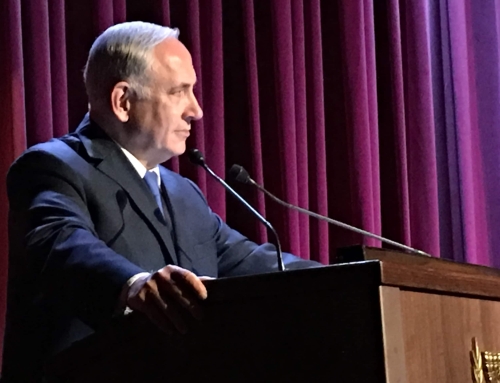
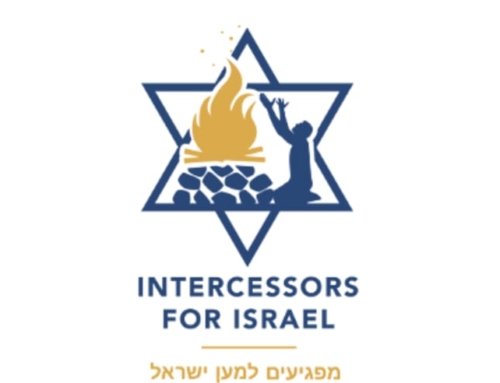

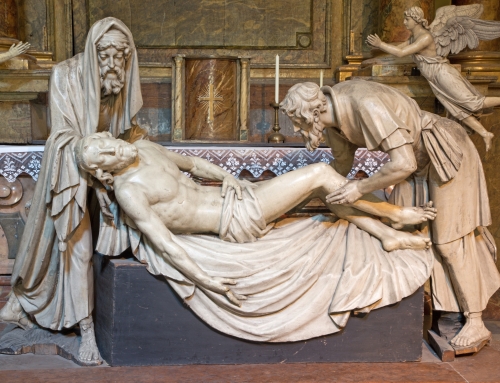
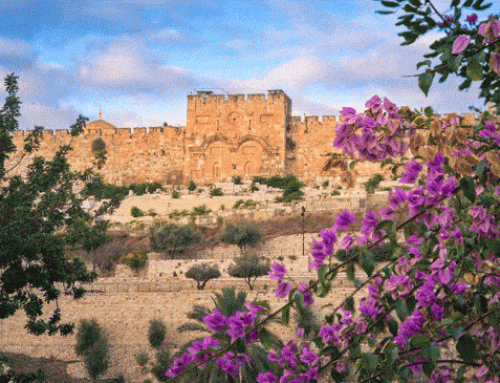
only half a percent of the Jewish population believe in Jesus….many of them believe Jesus has done them great harm over the centuries
That is all you have to say after reading this lengthy article?
This is so encouraging to hear and read. A sure sign of the times in which we are living as we look to the glorious return of our saviour.
Perhaps Graham has not yet read the entire article but will eventually be truly blessed by it. It may well be that the belief that Jesus has done them harm will subside in the revelation of the reality of His identity to the entire Jewish people. I pray for that!
Shalom and Maranatha!